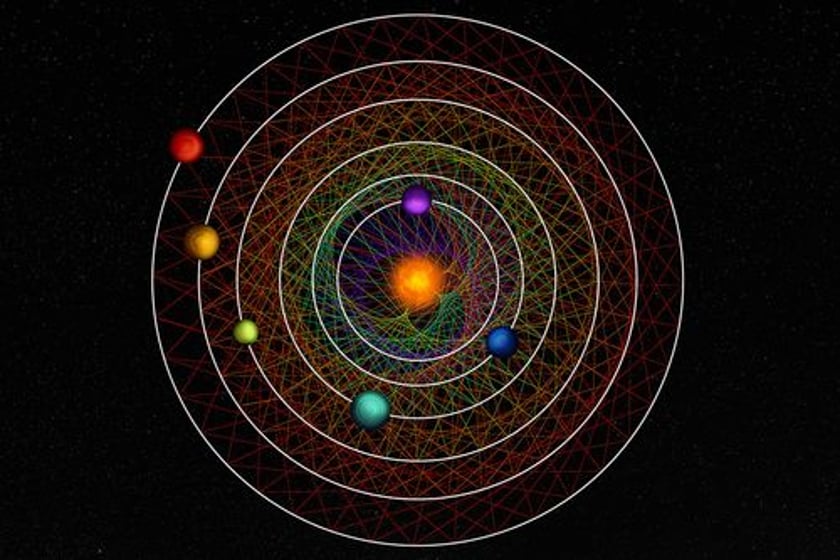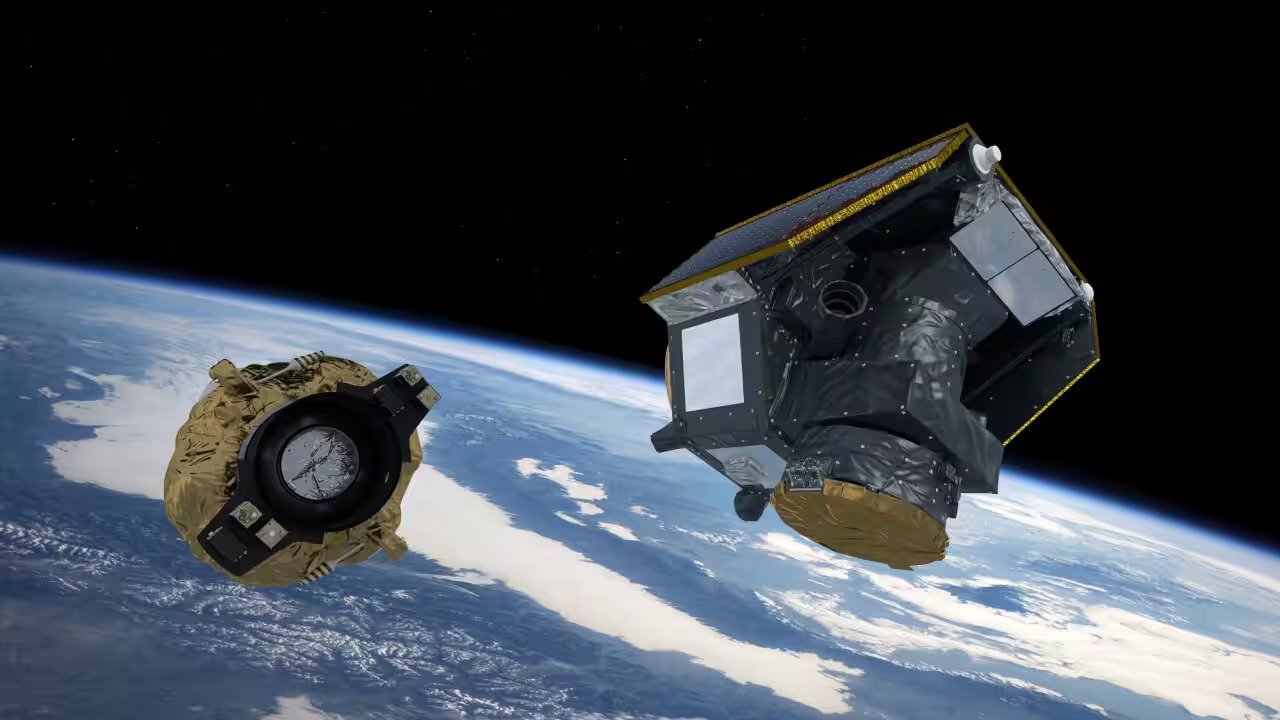Astronomers Uncover Nearby Solar System With Six Planets In Perfect Harmony
Astronomers uncover nearby solar system with six planets in perfect harmony. The cosmic mystery was unraveled using data from two distinct exoplanet-detecting satellites, with the rare planets situated approximately 100 light-years away from Earth.
Author:Hajra ShannonReviewer:Paula M. GrahamDec 01, 2023402 Shares40.1K Views

Astronomers uncover nearby solar system with six planets in perfect harmony. The cosmic mystery was unraveled using data from two distinct exoplanet-detecting satellites, with the rare planets situated approximately 100 light-years away from Earth. This significant discovery, centered around the star HD110067 in the Coma Berenices constellation, which is similar to our sun, presents an opportunity for scientists to delve into the intricacies of planet formation.
These six exoplanets, denoted as b through g, exhibit sizes larger than Earth but smaller than Neptune, belonging to the intriguing category known as sub-Neptunes. Such planets are commonly found orbiting stars resembling the sun within the Milky Way galaxy. The orbital dynamics of this planetary system involve a celestial ballet called orbital resonance.
In a study published in the journal Nature, researchers observed distinctive patterns emerging as the planets completed their orbits, influencing one another through gravitational forces. Notably, for every six orbits completed by the innermost planet, b, the outermost planet, g, completes one orbit, showcasing the fascinating harmony within this exoplanetary system.
In the cosmic choreography of this intriguing planetary family, as planet c completes three orbits around its host star, planet d gracefully completes two. Adding to this celestial dance, when planet e finishes four orbits, planet f elegantly completes three. The result is a mesmerizing harmonic rhythm, forming a resonant chain where all six planets align every few orbits.
What sets this planetary system apart is its remarkable stability over the course of more than 1 billion years since its formation. This enduring constancy offers scientists a unique opportunity to delve into the evolution of planets and gain insights into the origins of the prevalent sub-Neptunes observed throughout our Milky Way galaxy. The discovery holds the potential to unveil key aspects of planetary formation and evolution, contributing to our broader understanding of the cosmic processes shaping distant planetary systems.
Identifying The Unknown
The star system under investigation initially caught researchers' attention in 2020 when NASA's Transiting Exoplanet Survey Satellite (TESS) detected fluctuations in the brightness of HD110067. These variations in starlight often indicate the presence of a planet passing in front of its host star, a phenomenon observed as the planet follows its orbital trajectory. The transit method, which involves detecting these dips in luminosity, stands as a primary strategy employed by scientists to identify exoplanets through ground and space-based telescopes.
From the 2020 data, astronomers determined the orbital periods of two planets orbiting the star. Two years later, during another observation by TESS, discrepancies emerged, suggesting different orbital periods for these planets.
Facing this inconsistency in the datasets, lead study author Rafael Luque and his colleagues opted for a fresh perspective, turning to the European Space Agency's CHaracterising ExOPlanet Satellite (Cheops). Unlike TESS, which observes fractions of the night sky for brief intervals, Cheops focuses on a single star at a time, offering a distinct vantage point to reevaluate the star system in question.
"We went fishing for signals among all the potential periods that those planets could have," said Luque, a postdoctoral scholar in the University of Chicago’s department of astronomy and astrophysics.
Cheops played a pivotal role in resolving the "detective story" initiated by TESS, according to lead study author Rafael Luque. The data collected by Cheops proved instrumental in confirming the orbital periods and rhythmic resonance of two planets initially identified by TESS, while also unveiling the presence of a previously undetected third planet within the star system.
By aligning the unexplained TESS data with Cheops observations, the research team successfully uncovered the remaining three planets in orbit around the star. Subsequent validations using ground-based telescopes solidified the existence of these planets.
The dedicated observational time afforded by Cheops proved crucial in untangling the complexities of the TESS data, clarifying the number of planets passing in front of the star and elucidating the intricate orbital resonances within this captivating planetary system.
“„Cheops gave us this resonant configuration that allowed us to predict all the other periods. Without that detection from Cheops, it would have been impossible.- Luque
The innermost planet in this system requires slightly over nine Earth days to complete a full orbit around the star, while the farthest one takes approximately 55 days. Notably, all these planets exhibit swifter revolutions around their host star compared to Mercury, which completes one lap around the sun in 88 days.
Due to their proximity to HD110067, these planets are anticipated to experience scorching average temperatures akin to those observed on Mercury and Venus. The temperature range is expected to fluctuate between 332 degrees Fahrenheit and 980 degrees Fahrenheit (167 degrees Celsius and 527 degrees Celsius).
Why Planetary Rhythm Matters
The beginning of planetary systems, including our solar system, often involves a violent journey. Although astronomers theorize that planets typically form in resonance around their parent stars, the gravitational effects of massive planets, encounters with passing stars, or collisions with other celestial bodies can disrupt this harmonious balance.
In the broader scope, most planetary systems do not maintain resonance, making those with multiple planets that retain their original rhythmic orbits exceptionally uncommon. This rarity positions HD110067 and its planets as a valuable subject for in-depth study, similar to examining a "rare fossil," according to Rafael Luque. Astronomers are keen to investigate this unique system to gain insights into the processes that can either preserve or disturb the delicate orbital arrangements of planets around stars.
"We think only about one percent of all systems stay in resonance," Luque said in a statement. "It shows us the pristine configuration of a planetary system that has survived untouched."
This marks the second instance where Cheops has played a pivotal role in uncovering a planetary system characterized by orbital resonance. The initial discovery, named TOI-178, was officially announced in 2021.
“„As our science team puts it: Cheops is making outstanding discoveries sound ordinary. Out of only three known six-planet resonant systems, this is now the second one found by Cheops, and in only three years of operations.- Maximilian Günther, ESA Cheops project scientist
A Perfect Observation Target
The planetary system presents a unique opportunity for studying the formation of sub-Neptunes, as highlighted by the study authors.
Although sub-Neptunes are prevalent in the Milky Way galaxy, they are notably absent in our own solar system. The scientific community lacks consensus regarding the formation and composition of these intriguing planets. Therefore, the existence of an entire system comprised of sub-Neptunes, such as the one identified, holds significant promise in unraveling the mysteries surrounding their origin, as emphasized by Rafael Luque.
While numerous exoplanets have been identified orbiting cooler and smaller dwarf stars, like the renowned TRAPPIST-1 system with its seven planets announced in 2017, the HD110067 system stands out for its resonance chain. Notably, the challenges posed by the faintness of the host star in systems like TRAPPIST-1 make detailed observations more challenging.
However, HD110067, boasting 80% of the mass of our sun, holds the distinction of being the brightest star known to have more than four planets in orbit. This brightness significantly facilitates the observation of the system.
Preliminary assessments of the planets' masses indicate that some harbor voluminous hydrogen-rich atmospheres, rendering them particularly intriguing subjects for investigation with the James Webb Space Telescope. Leveraging the capabilities of the Webb telescope, scientists can analyze the composition of each world by studying the starlight that filters through their atmospheres. This presents a valuable opportunity to gain deeper insights into the diverse characteristics of these exoplanets within the HD110067 system.
“„The sub-Neptune planets of the HD110067 system appear to have low masses, suggesting they may be gas or water-rich. Future observations, for example with the James Webb Space Telescope, of these planetary atmospheres could determine whether the planets have rocky or water-rich interior structures.- Study coauthor Jo Ann Egger, doctoral student in astrophysics at the University of Bern in Switzerland

Hajra Shannon
Author

Paula M. Graham
Reviewer
Latest Articles
Popular Articles
